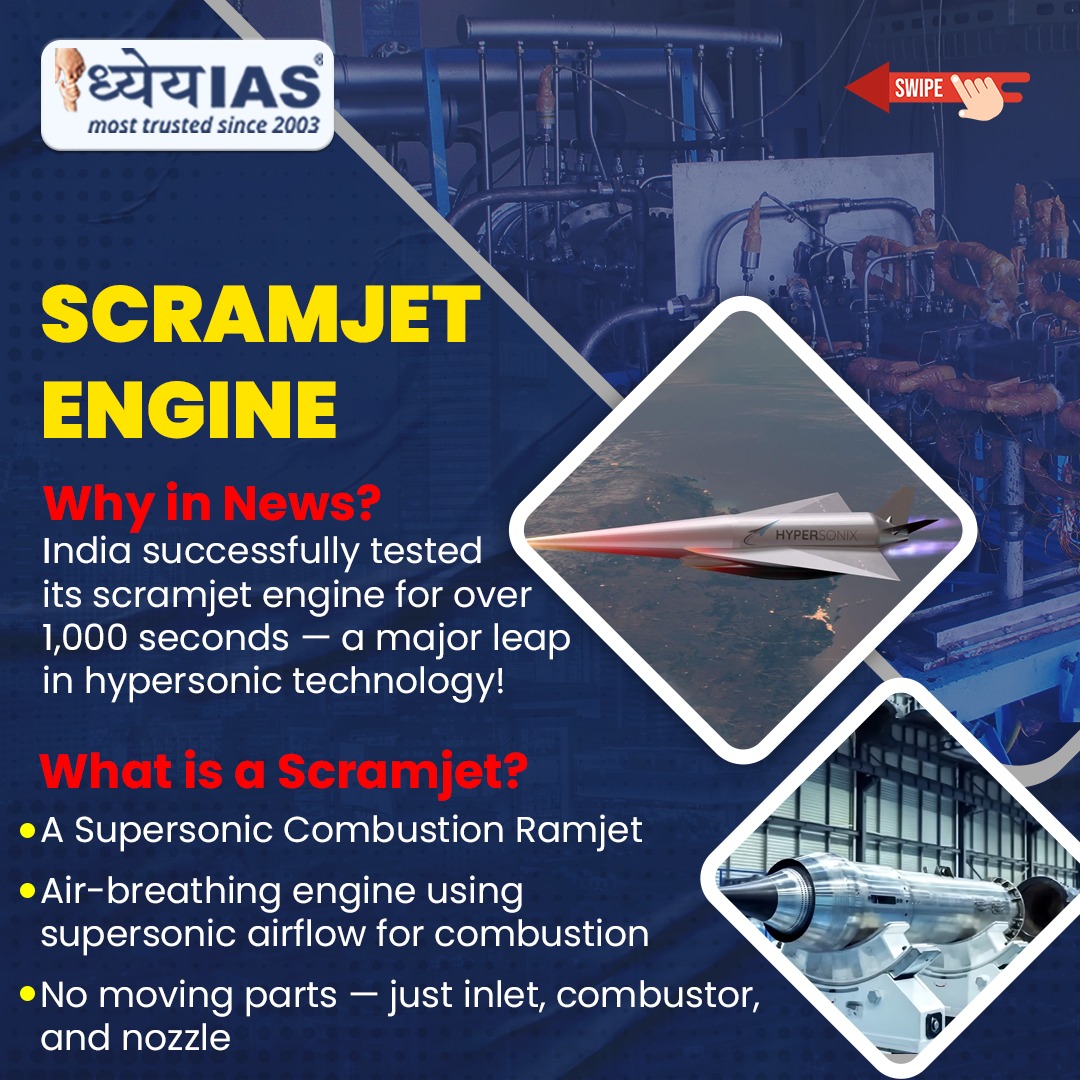Context:
India has achieved a major milestone in hypersonic weapon development. The Defence Research and Development Organisation (DRDO), through its Defence Research and Development Laboratory (DRDL) in Hyderabad, successfully conducted a long-duration test of an Active Cooled Scramjet Subscale Combustor, marking significant progress in this critical domain.
Understanding Hypersonic Missiles
Hypersonic missiles are advanced systems capable of flying at speeds greater than Mach 5 (over 5,400 kmph). Highly maneuverable, they can evade traditional air defenses and deliver rapid, precise strikes. Nations like the United States, Russia, China, and India are actively investing in hypersonic technologies to redefine strategic military capabilities.
The Scramjet Engine: A Technological Leap
- The scramjet (Supersonic Combusting Ramjet) engine signifies a major advancement over traditional ramjets by enabling combustion at supersonic speeds. Unlike conventional jet engines that rely on rotating compressors, both ramjets and scramjets compress incoming air through the vehicle's forward motion. An evolved variant, known as the Dual Mode Ramjet (DMRJ), further enhances flexibility by operating in both subsonic and supersonic combustion modes.
- A key enabler for sustained hypersonic flight is the scramjet engine. A scramjet (Supersonic Combustion Ramjet) is an air-breathing propulsion system that allows combustion to occur at supersonic speeds. Unlike traditional jet engines, scramjets have no moving parts, relying instead on the vehicle’s high speed to compress incoming air before combustion.
- Operating a scramjet engine is an engineering challenge comparable to keeping a candle lit in a hurricane. To maintain combustion under such extreme conditions, a special flame stabilization mechanism is used, ensuring that the engine can function efficiently even when airflows exceed 1.5 kilometers per second.
How the Scramjet Engine Operates?
· The engine requires the vehicle to already be traveling at supersonic speeds (above Mach 3).
· Incoming air is compressed naturally due to the high velocity of the vehicle, eliminating the need for mechanical compressors.
· Hydrogen or similar fuels are injected into the compressed air and ignited, maintaining a supersonic airflow throughout the combustor.
· The combustion of fuel produces hot gases that expand and exit through the nozzle, generating thrust according to Newton’s Third Law—every action has an equal and opposite reaction.
Advantages of Scramjet Technology:
- Uses atmospheric oxygen, reducing vehicle weight compared to traditional rockets that carry oxidizers.
- Facilitates reusable and more cost-effective space missions with heavier payloads.
- Enables vehicles to reach speeds beyond Mach 6.
- Strengthens hypersonic missile and reconnaissance capabilities, enhancing national defense.
Conclusion:
India’s success in hypersonic technology, amid growing regional tensions and strategic rivalries, is a critical boost to its defense capabilities. As global powers race to develop faster, more precise, and survivable weapon systems, hypersonic missiles are set to reshape the future of military strategy. DRDO’s achievement represents a vital step in securing India’s place among the leading nations mastering this transformative technology.







